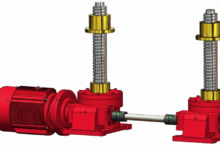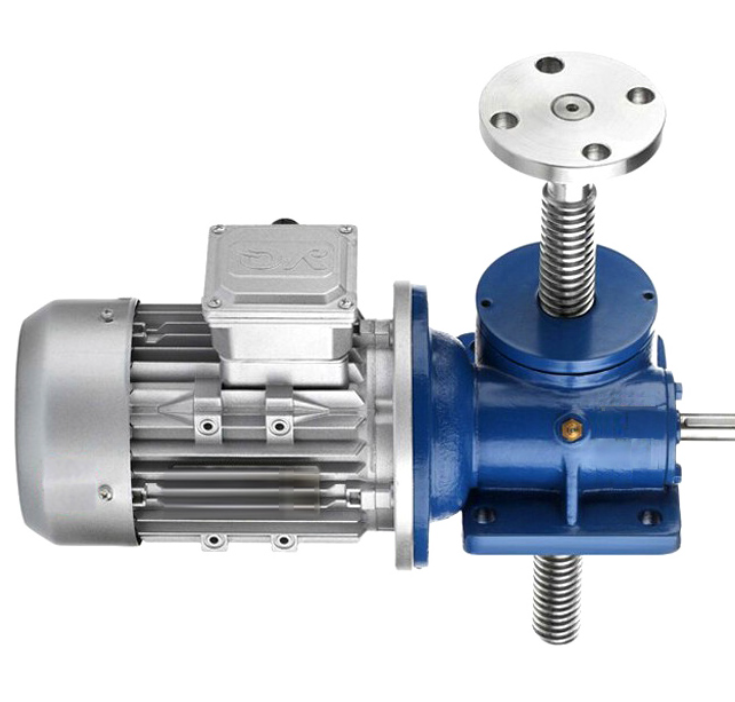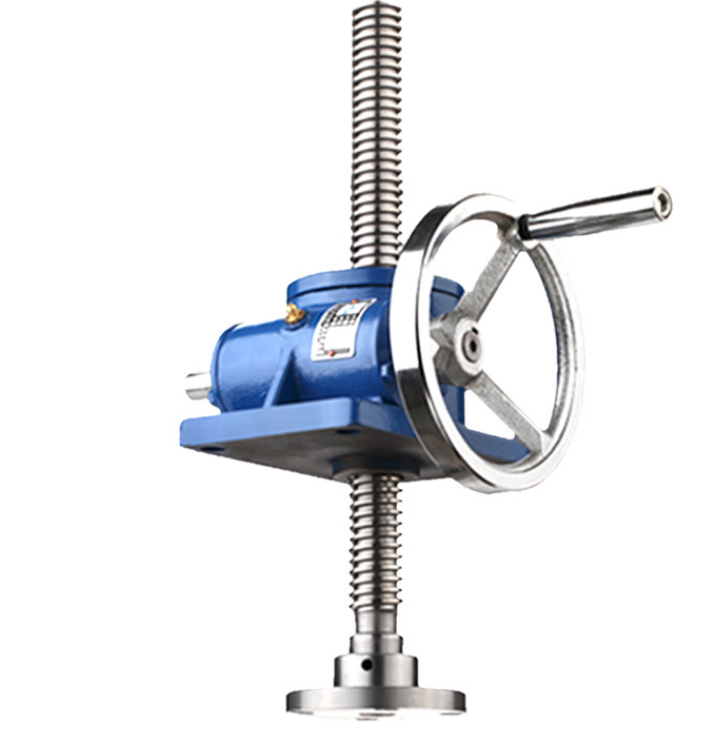
How Screw Jacks Are Used in Industrial Applications?
admin
- 0
Screw Jacks are modern mechanisms widely used in various industrial settings to lift heavy loads with minimal effort, often known as Manual or Mechanical screw jacks.
They consist of a cone-shaped base area and threaded lead screw; when loads are applied to these machines, the screw rotates up and lifts them off by rotating itself.
How to Use a Screw Jack?
Table of Contents
ToggleScrew jacks are versatile mechanical devices used in various industrial settings for lifting, lowering, pushing and pulling heavy loads.
These machines usually incorporate motors for smooth and controllable linear movement. Motors may either be electrical or hydraulic in nature.
There are various kinds of screw jacks, such as worm gear, bevel gear and ball screw jacks; each with their own advantages and disadvantages.
Choice of screw jack depends heavily upon load application and duty cycle; if the machine requires frequent adjustments, ball screw jacks might be preferable.
There are variations to the basic jack design that include anti-backlash and safety nut features to meet customer specifications, while some manufacturers also provide “cubic” designs which can be mounted on both faces of the frame (Fig 1).
When it comes to selecting the right screw jack for your application, there are several factors that should be taken into consideration. One important factor is the type of load that will be supported by the screw jack. Mechanical Screw Jacks are commonly used in applications where heavy loads need to be lifted or lowered, and they can often handle loads of several tons.
Another important consideration is the required speed and precision of the screw jack. Some mechanical screw jacks are designed for quick, efficient lifting and lowering, while others are better suited for slow and steady movements. Additionally, the level of precision required will depend on the specific application, with some applications requiring very precise movements to avoid damage or injury.

Other factors to consider when selecting a mechanical screw jack include the environmental conditions in which it will be used, such as temperature, humidity, and exposure to harsh chemicals or other substances. It is also important to consider the available space for the screw jack, as well as any mounting requirements or other installation considerations.
Ultimately, the selection of the right mechanical screw jack will depend on a variety of factors specific to the application, and careful consideration and evaluation of each of these factors will help ensure that the best possible choice is made.
Lifting Capacity
Motion system designers who need to actuate, lift and position heavy loads often turn to screw jacks for support. These jacks contain a worm gearbox mechanism which converts energy from either motor or manual input into linear motion of either rotating lifting screws or traveling nuts – an energy source can then be converted into linear movement of linear axis moving linearly along linear track.
Screw jack capacities depend on their design; capacities range from several hundred pounds up to several tons.
Each size of jack typically offers several gear ratios to optimize travel speed and drive torque, depending on its intended use. They may be powered either by an electric motor or hand wheel depending on individual applications.
Capacity for jacks is determined by a total load that includes static, dynamic, and inertia loading as well as factors like center of gravity, stiffness of system components, and lead variations on lift shafts.
Safety
Screw jacks are frequently employed in industrial settings to safely transport, lift and adjust heavy loads with minimal efforts. Common forms of operation for these jacks include pneumatic, electrical or hydraulic input.
Hydraulic motors tend to be self-locking, meaning they will not rotate backwards when power is removed from them, providing greater safety compared to their hydraulic counterparts that could back-drive under load if the motor were unexpectedly switched off.
Most screw jacks use a worm gear set that drives directly the screw spindle for optimal linear speeds – ideal for automation and handling machinery with high duty cycles.
These devices also include several safety features to protect against failure, such as ball nuts with an integral safety thread that helps prevent free fall if all the balls within them become dislodged and fall out.
Maintenance

All UNIMEC screw jacks come equipped with long-term lubricant that ensures optimal lubrication of both their threaded spindle and inner components, to avoid leakages. In order to do this successfully, lubricants should be periodically rotated depending on duty conditions and operating environment to keep leakages to a minimum.
Users have a responsibility to regularly inspect and maintain threaded spindles and worm screws to ensure proper lubrication, detect foreign materials, and eliminate them as quickly as possible. Safety components should also be examined according to applicable norms and restored as necessary.
After each use, screw jacks must be checked for leaks of lubricant to detect possible problems and fix any causes as soon as possible while replenishing to its appropriate levels.
Consideration must also be given to whether or not a self-locking mechanism will work correctly in your system. Vibration could cause it to loosen its nut and unlatch due to dynamic loading on its threads, rendering your screw jack useless for use.


